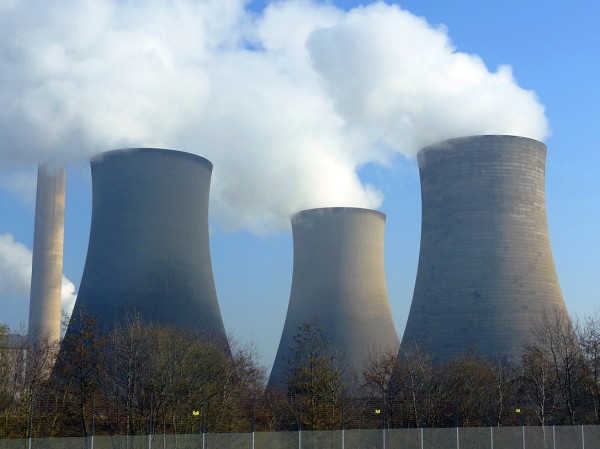 One example of an oligopoly was recently discussed on this blog –supermarkets. Here, is another classic example: the energy sector. It is dominated by six big firms, which hold the majority of the market in an industry with high barriers to entry; there is inter-dependence between the firms; and there are accusations of price fixing and collusion – all typical features of an oligopoly that may operate against consumers’ interests.
One example of an oligopoly was recently discussed on this blog –supermarkets. Here, is another classic example: the energy sector. It is dominated by six big firms, which hold the majority of the market in an industry with high barriers to entry; there is inter-dependence between the firms; and there are accusations of price fixing and collusion – all typical features of an oligopoly that may operate against consumers’ interests.
There have been numerous investigations into the actions of these energy providers, owing to their high prices, a lack of competition and significant profits. Developments in the industry have focused on reducing the barriers to entry created by the vertical integration of the incumbent firms in order to make it easier for new firms to enter, thus boosting competition.
However, the latest step is the biggest one, with the energy regulator, Ofgem, referring this industry to the Competition and Markets Authority (CMA). The investigation is likely to last 18 months and will ‘leave no stone unturned in establishing the truth behind energy prices’.
One of the key things that will be investigated is the accusation of profiteering and thus whether the big six should be broken up. This would inevitably lead to reductions in entry barriers and more opportunities for new firms to enter the market, thereby creating a much needed increase in competition. The Chief Executive of Ofgem, Dermot Nolan said:
Now is the right time to refer the energy market to the CMA for the benefit of consumers…There is near-unanimous support for a referral and the CMA investigation offers an important opportunity to clear the air. This will help rebuild consumer trust and confidence in the energy market as well as provide the certainty investors have called for.
Further comments were made about the energy sector and the future direction in terms of market reforms. This was another reason given for the referral to the CMA. Dermot Nolan added:
A CMA investigation should ensure there are no barriers to stop effective competition bearing down on prices and delivering the benefits of these changes to consumers.
The impact of this latest news will undoubtedly be felt by the big six, with share prices already taking a small hit, as investors start to look ahead to the potential outcome, despite any decision not being expected for a good 18 months. The following articles consider this latest energy market development.
Ofgem puts big six energy suppliers under CMA spotlight The Guardian, Terry Macalister (26/6/14)
Ofgem refers ‘big six’ energy groups for competition probe Financial Times, Claer Barrett (26/6/14)
U.K. energy regulator Ofgem asks for utilities probe Wall Street Journal, Selina Williams (26/6/14)
Energy probe could lead to ‘major structural change’ BBC News (26/6/14)
Probe into energy firms’ £100 per home profits The Telegraph, Emily Gosden (26/6/14)
UK competition watchdog kicks off energy suppliers probe Reuters (26/6/14)
Energy sharks may £101 profit per family: Major inquiry launched into power Mail Online, Sean Poulter (26/6/14)
Big six energy firms face full competition probe Independent, Simon Read (26/6/14)
Questions
- How well does the energy sector fit the structure of an oligopoly?
- What are the barriers to entry in the energy market? How can this referral to the CMA help to reduce them?
- Which factors determine the price of energy?
- The big six have been accused of profiteering. What is meant by this and why is it against the public interest?
- Why has it taken so long for such a referral to take place?
- In the BBC News article, the suggestion is that this investigation could lead to a ‘major structural change’. What is meant by this and why is it a possibility?
 The energy market is complex and is a prime example of an oligopoly: a few dominant firms in the market and interdependence between the suppliers. Over 95% of the market is supplied by the so-called ‘big six’ and collectively they generate 80% of the country’s electricity. There are two further large generators (Drax Power Limited and GDF Suez Energy UK), meaning the electricity generation is also an oligopoly.
The energy market is complex and is a prime example of an oligopoly: a few dominant firms in the market and interdependence between the suppliers. Over 95% of the market is supplied by the so-called ‘big six’ and collectively they generate 80% of the country’s electricity. There are two further large generators (Drax Power Limited and GDF Suez Energy UK), meaning the electricity generation is also an oligopoly.
This sector has seen media attention for some years, with criticisms about the high profits made by suppliers, the high prices they charge and the lack of competition. Numerous investigations have taken place by Ofgem, the energy market regulator, and the latest development builds on a simple concept that has been a known problem for decades: barriers to entry. It is very difficult for new firms to enter this market, in particular because of the vertically integrated nature of the big six. Not only are they the suppliers of the energy, but they are also the energy generators. It is therefore very difficult for new suppliers to enter the market and access the energy that is generated.
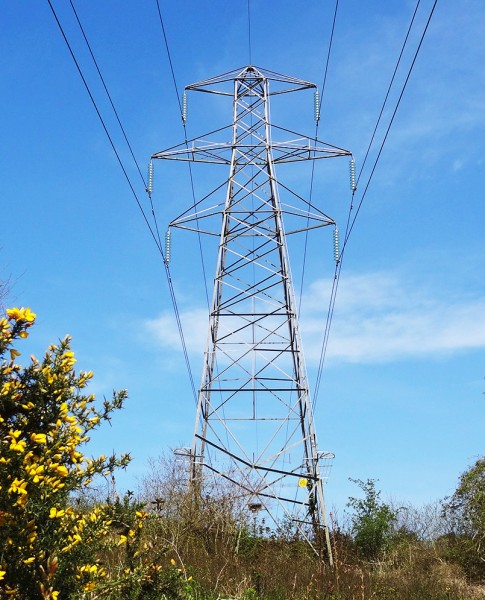 Ofgem’s new plans will aim to reduce the barriers to entry in the market and thus make it easier for new firms to enter and act as effective competitors. The big six energy generators are vertically integrated companies and thus effectively sell their energy to themselves, whereas other suppliers have to purchase their energy before they can sell it. The regulator’s plans aim to improve transparency by ensuring that wholesale power prices are published two years in advance, thus making it easier for smaller companies to buy energy and then re-sell it. Andrew Wright, the Chief Executive of Ofgem, said:
Ofgem’s new plans will aim to reduce the barriers to entry in the market and thus make it easier for new firms to enter and act as effective competitors. The big six energy generators are vertically integrated companies and thus effectively sell their energy to themselves, whereas other suppliers have to purchase their energy before they can sell it. The regulator’s plans aim to improve transparency by ensuring that wholesale power prices are published two years in advance, thus making it easier for smaller companies to buy energy and then re-sell it. Andrew Wright, the Chief Executive of Ofgem, said:
These reforms give independent suppliers, generators and new entrants to the market, both the visibility of prices, and [the] opportunities to trade, [that] they need to compete with the largest energy suppliers…Almost two million customers are with independent suppliers, and we expect these reforms to help these suppliers and any new entrants to grow.
Although such reforms will reduce the barriers to entry in the market and thus should aim to increase competition and hence benefit consumers, many argue that the reforms don’t go far enough and will have only minor effects on the competitiveness in the market. There are still calls for further reforms in the market and a more in-depth investigation to ensure that consumers are really getting the best deal. The following articles consider this ongoing saga and this highly complex market.
Ofgem ramps up scrutiny of Big six accounts Telegraph, Denise Roland (27/2/14)
 Energy firms told to trade fairly with smaller rivals BBC News (26/2/14)
Energy firms told to trade fairly with smaller rivals BBC News (26/2/14)
Energy regulator Ofgem force trading rules on ‘big six’ suppliers Financial Times, Andy Sharman (26/2/14)
Ed Davey calls on Ofgem to investigate energy firms’ gas profits The Guardian, Sean Farrell and Jennifer Rankin (10/2/14)
UK forces big power companies to reveal wholesale prices Reuters (26/2/14)
Watchdog unveils new rules on Big six energy prices Independent, Tom Bawden (26/2/14)
Energy Bills: New rules to boost competition Sky News, (26/2/14)
Questions
- What are the characteristics of an oligopoly?
- Explain the reason why the vertically integrated nature of the big six energy companies creates a barrier to the entry of new firms.
- What are the barriers to entry in (a) the electricity supply market and (b) the electricity generating market?
- What action has Ofgem suggested to increase competition in the market? How effective are the proposals likely to be/
- Why is there a concern about liquidity in the market?
- If barriers to entry are reduced, how will this affect competition in the market? How will consumers be affected?
- Why are there suggestions that Ofgem’s proposals don’t go far enough?
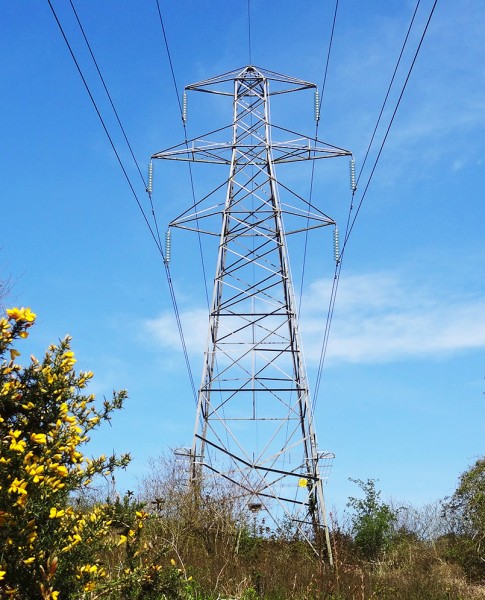 The cost of living is a contentious issue and is likely to form a key part of the political debate for the next few years. This debate has been fuelled by the latest announcement by SSE of an average rise in consumer energy bills of 8.2%, meaning that an average dual-fuel customer would see its bill rise by £106. With this increase, the expectation is that the other big energy companies will follow suit with their own price rises.
The cost of living is a contentious issue and is likely to form a key part of the political debate for the next few years. This debate has been fuelled by the latest announcement by SSE of an average rise in consumer energy bills of 8.2%, meaning that an average dual-fuel customer would see its bill rise by £106. With this increase, the expectation is that the other big energy companies will follow suit with their own price rises.
Energy prices are made up of numerous factors, including wholesale prices, investment in infrastructure and innovation, together with government green energy taxes. SSE has put their price hike down to an increase in wholesale prices, but has also passed part of the blame onto the government by suggesting that the price hikes are required to offset the government’s energy taxes. Will Morris, from SSE said:
We’re sorry we have to do this…We’ve done as much as we could to keep prices down, but the reality is that buying wholesale energy in global markets, delivering it to customers’ homes, and government-imposed levies collected through bills – endorsed by all the major parties – all cost more than they did last year.
The price hike has been met with outrage from customers and the government and has provided Ed Miliband with further ammunition against the Coalition’s policies. However, even this announcement has yet to provide the support for Labour’s plans to freeze energy prices, as discussed in the blog Miliband’s freeze.  Customers with other energy companies are likely to see similar price rises in the coming months, as SSE’s announcement is only the first of many. A key question is how will the country provide the funding for much needed investment in the energy sector? The funds of the government are certainly not going to be available to provide investment, so the job must pass to the energy companies and in turn the consumers. It is this that is given as a key reason for the price rises.
Customers with other energy companies are likely to see similar price rises in the coming months, as SSE’s announcement is only the first of many. A key question is how will the country provide the funding for much needed investment in the energy sector? The funds of the government are certainly not going to be available to provide investment, so the job must pass to the energy companies and in turn the consumers. It is this that is given as a key reason for the price rises.
Investment in the energy infrastructure is essential for the British economy, especially given the lack of investment that we have seen over successive governments – both Labour and Conservative. Furthermore, the government’s green targets are essential and taxation is a key mechanism to meet them. Labour has been criticized for its plans to freeze energy prices, which may jeopardise these targets. The political playing field is always fraught with controversy and it seems that energy prices and thus the cost of living will remain at the centre of it for many months.
 More energy price rises expected after SSE increase BBC News (10/10/13)
More energy price rises expected after SSE increase BBC News (10/10/13)
SSE retail boss blames government for energy price rise The Telegraph, Rebecca Clancy (10/10/13)
A better way to take the heat out of energy prices The Telegraph (11/10/13)
SSE energy price rise stokes political row Financial Times, John Aglionby and Guy Chazan (10/10/13)
Ed Miliband condemns ‘rip-off’ energy firms after SSE 8% price rise The Guardian, Terry Macalister, Angela Monaghan and Rowena Mason (28/9/12)
Coalition parties split over energy companies’ green obligations Independent, Nigel Morris (11/10/13)
Energy price rise: David Cameron defends green subsidies The Guardian, Rowena Mason (10/10/13)
‘Find better deals’ users urged as energy bills soar Daily Echo (11/10/13)
Energy Minister in row over cost of taxes Sky News (10/10/13)
SSE energy price rise ‘a bitter pill for customers’ The Guardian, Angela Monaghan (10/10/13)
Energy firm hikes prices, fuels political row Associated Press (10/10/13)
Only full-scale reform of our energy market will prevent endless price rises The Observer, Phillip Lee (27/10/13)
Questions
- In what market structure would you place the energy sector?
- Explain how green taxes push up energy bills? Use a diagram to support your answer.
- Consider the energy bill of an average household. Using your knowledge and the articles above, allocate the percentage of that bill that is derived from wholesale prices, green taxes, investment in infrastructure and any other factors. Which are the key factors that have risen, which has forced SSE (and others) to push up prices?
- Why is investment in energy infrastructure and new forms of fuel essential? How might such investment affect future prices?
- Why has Labour’s proposed 20-month price freeze been criticised?
- What has happened to energy prices over the past 20 years?
- Is there now a call for more government regulation in the energy sector to allay fears of rises in the cost of living adversely affecting the poorest households?
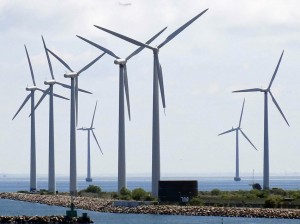 The environment has been a growing part of government policy for many years. With the Kyoto Protocol and Europe’s carbon trading system, effort has been made to reduce carbon emissions. Part of UK policy to meet its emission’s target requires substantial investment in infrastructure to provide efficient energy.
The environment has been a growing part of government policy for many years. With the Kyoto Protocol and Europe’s carbon trading system, effort has been made to reduce carbon emissions. Part of UK policy to meet its emission’s target requires substantial investment in infrastructure to provide efficient energy.
Details of the government’s Energy Bill sets out plans that will potentially increase average household energy bills by about £100 per annum, although estimates of this vary from about £90 to £170. This money will be used to finance much needed investment in infrastructure that will allow the UK to meet its carbon emissions target. With this extra cost on bills, energy companies will increase bring in something like £7.6bn. The benefit of this higher cost is that investment today will lead to lower energy bills tomorrow. Essentially, we’re looking at a short-term cost for a long-term gain.
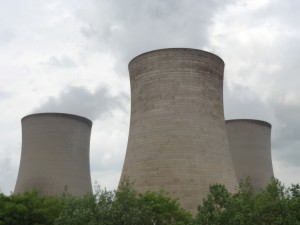 The Energy Bill also delayed setting a carbon emission target until 2016. Crucially, this will come after the next election. Environmentalists have naturally criticised this omission. John Sauven of Greenpeace said:
The Energy Bill also delayed setting a carbon emission target until 2016. Crucially, this will come after the next election. Environmentalists have naturally criticised this omission. John Sauven of Greenpeace said:
’By failing to agree to any carbon target for the power sector until after the next election, David Cameron has allowed a militant tendency within his own ranks to derail the Energy Bill … It’s a blatant assault on the greening of the UK economy that leaves consumers vulnerable to rising gas prices, and sends billions of pounds of clean-tech investment to our economic rivals.’
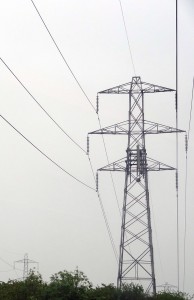
One further problem that this lack of a target creates is uncertainty. The energy sector requires significant investment and in order to be encouraged to invest, firms need assurances. Without knowing the target and hence facing a degree of uncertainty, firms may be less likely to invest in building new power plants. And this investment is crucial. The Government has committed to replacing most coal-fired power stations across Britain with low carbon technology at a cost of hundreds of billions of pounds. However, the Chancellor has said “he would not allow saving the planet to come at the cost of ‘putting our country out of business.’”
When this Energy Bill is published, it is claimed that £110bn of spending on different aspects of the National Grid will occur. The suggestion is that this will generate a further 250,000 jobs by 2030 and will be a big step in the right direction towards creating an economy that is more reliant on clean energy.
The following articles consider the wide range of issues surrounding the Energy Bill.
’It’s reasonable to hike energy bills to build wind farms’ says Tim Yeo The Telegraph, Rowena Mason (23/11/12)
Energy Bill to increase prices to fund cleaner fuel BBC News (23/11/12)
Energy deal means bills will rise to pay for green power The Guardian, Juliette Jowit and Fiona Harvey (23/11/12)
Energy Bill Q&A BBC News (23/11/12)
Energy bills to rise by £170 a year to fund wind farms Independent, Andrew Woodcock and Emily Beament (23/11/12)
Energy deal – but no target to cut Britain’s carbon emissions Independent, Nigel Morris (22/11/12)
Davey defends contentious energy agreement Financial Times, Jim Pickard, Pilita Clark and Hannah Kuchler (23/11/12)
Energy bill lacks emissions target Channel 4 News (23/11/12)
Questions
- Why does the environment require so much government intervention? Think about the different ways in which the environment as a market fails.
- If household bills rise, is there likely to be an income and substitution effect between consumption of ‘energy’ and other goods? Which direction will each effect move in and which do you think would be the largest?
- Why is uncertainty such a deterrent for investment? Why does a lack of a carbon emissions target represent uncertainty?
- The higher cost of bills today may enable future bills to fall. Why is this? For a household, explain why discount factors could be important here.
- Why do some argue that the extra cost to households set out by the government are likely to under-estimate the actual increase households will face?
- Is the Chancellor right to say that he will not put our country out of business to save the planet?
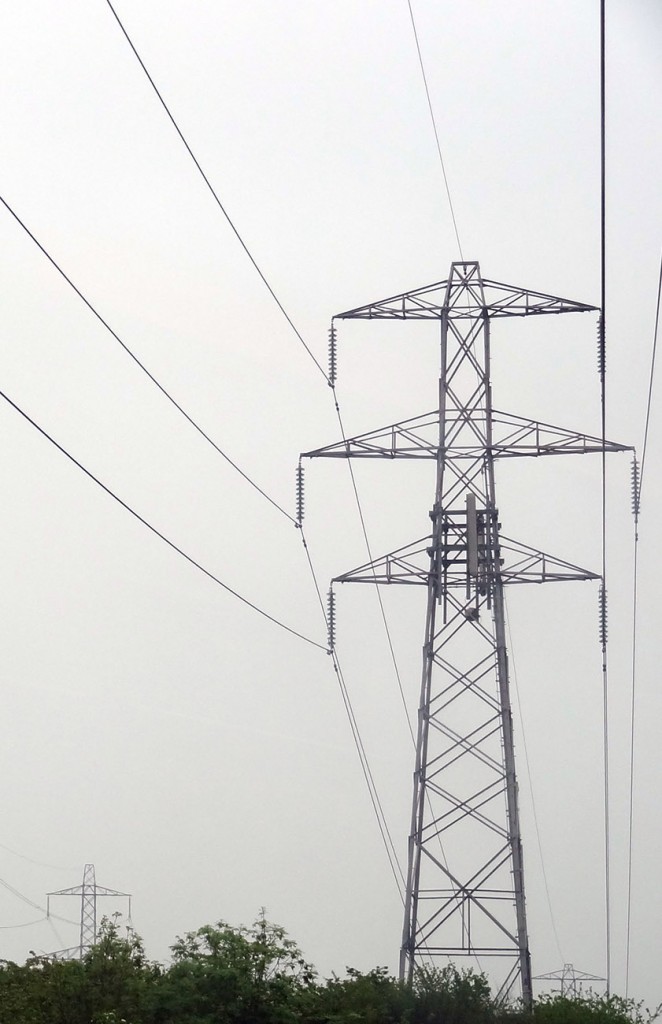 The energy sector has a history of criticism with regards to prices and practices. In the past, Ofgem have tried to make the sector more competitive, by ensuring that price comparisons are easier. At the beginning of this year, many of the big six providers announced price cuts, but within the next few weeks, we will see the reverse occurring, as energy prices begin to rise.
The energy sector has a history of criticism with regards to prices and practices. In the past, Ofgem have tried to make the sector more competitive, by ensuring that price comparisons are easier. At the beginning of this year, many of the big six providers announced price cuts, but within the next few weeks, we will see the reverse occurring, as energy prices begin to rise.
British Gas has announced price rises of 6% from 16th November that will affect over 8 million customers by adding approximately £80 per year to the annual dual fuel bill. Npower will also put its prices up 10 days later (8.8% for gas and 9.1% for electricity), creating higher bills for 3 million people.
In January of this year, when we saw energy prices fall, it was not solely due to Ofgem’s findings. We had a relatively mild winter, which reduced the demand for energy and this fed into lower prices. As the winter now approaches once more, demand for energy will begin to increase, feeding into prices that are now higher.
Furthermore, the energy companies have said that a range of external factors are also adding to their costs and putting increasing pressure on them to increase their charges. Npower’s Chief Commercial Officer said:
“There is never a good time to increase energy bills, particularly when so many people are working hard to make ends meet…But the costs of new statutory schemes, increases in distribution charges and the price of gas for the coming winter are all being driven up by external factors, for example government policy”
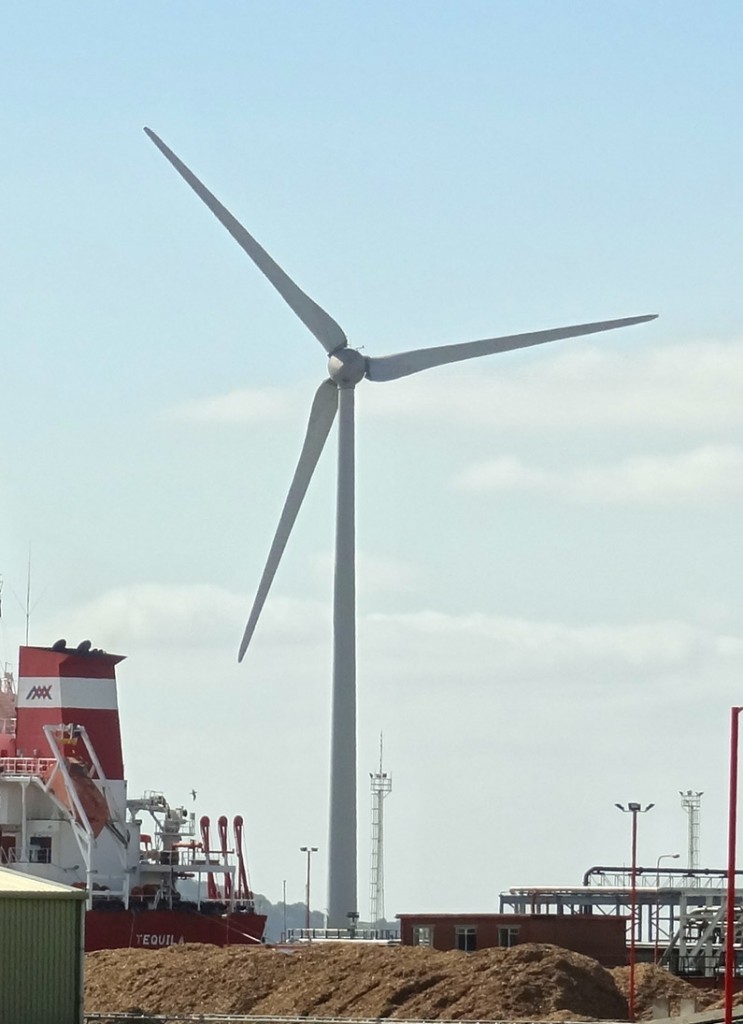 Significant investment is needed in the energy sector. Energy companies are required to set aside money for maintaining and improving the national grid and investing in renewable energy, such as wind and solar power. In order for the energy companies to fund these investments, more money must be raised and the logical method is to put up prices. However, critics are simply blaming ‘these very big lazy companies’ who are passing ‘above-inflation price rises’ onto already squeezed households.
Significant investment is needed in the energy sector. Energy companies are required to set aside money for maintaining and improving the national grid and investing in renewable energy, such as wind and solar power. In order for the energy companies to fund these investments, more money must be raised and the logical method is to put up prices. However, critics are simply blaming ‘these very big lazy companies’ who are passing ‘above-inflation price rises’ onto already squeezed households.
Part of this is undoubtedly to do with the market structure of this sector. A typical oligopoly creates a market which, under certain circumstances, can be highly competitive, but because of barriers to entry that prevent new firms from entering the market may charge higher prices and be inefficient. Indeed, Ofgem has plans to reduce the power of the main energy providers by forcing them to auction off some of the electricity they generate. The aim of this is to free up the market and make it more competitive.
While only three providers have announced price rises, it is inevitable that the other three will follow. The relative increases will create incentives for consumers to switch providers, but crucial to this is an ability to understand the different tariffs on offer and lack of clarity on this has been a big criticism previously levelled at the energy sector. Indeed, half of UK customers have never switched energy providers. Perhaps this is the time to think about it, firstly as a means of saving money and secondly as a means of putting the energy companies in competition with each other. The following articles consider this market.
Energy price rises: how to switch, save and safeguard your supply The Guardian, Mark King (12/10/12)
 Npower and British Gas raise energy prices (including video) BBC News (12/10/12)
Npower and British Gas raise energy prices (including video) BBC News (12/10/12)
Energy price rises? We’re like turkeys voting for Christmas The Telegraph, Rosie Murray-West (12/10/12)
British Gas and Npower to raise prices fuelling fears of a ‘long, cold winter’ for more households Independent
, Graeme Evans (12/10/12)Wholesale prices rise as energy costs jump Wall Street Journal, Sarah Portlock and Jeffrey Sparshott (12/10/12)
British Gas raises gas and electricity prices by 6pc The Telegraph (12/10/12)
Osborne warns energy firms over price hikes Reuters (12/10/12)
Energy price hikes to take effect from next week Independent, Simon Read(13/10/12)
Questions
- What are the main reasons influencing the recent price rises? In each case, explain whether it is a demand- or supply-side factor.
- Using your answer from question 1, illustrate the effect of it on a demand and supply diagram.
- Which features of an oligopolistic market are relevant to the energy sector. How can we use them to explain these higher prices.
- How has government policy affected the energy sector and energy prices?
- Why are customers reluctant to change energy providers? Does this further the energy company’s ability to raise prices?
- Are there any government policies that could be implemented to reduce the power of the energy companies?
 One example of an oligopoly was recently discussed on this blog –supermarkets. Here, is another classic example: the energy sector. It is dominated by six big firms, which hold the majority of the market in an industry with high barriers to entry; there is inter-dependence between the firms; and there are accusations of price fixing and collusion – all typical features of an oligopoly that may operate against consumers’ interests.
One example of an oligopoly was recently discussed on this blog –supermarkets. Here, is another classic example: the energy sector. It is dominated by six big firms, which hold the majority of the market in an industry with high barriers to entry; there is inter-dependence between the firms; and there are accusations of price fixing and collusion – all typical features of an oligopoly that may operate against consumers’ interests.







